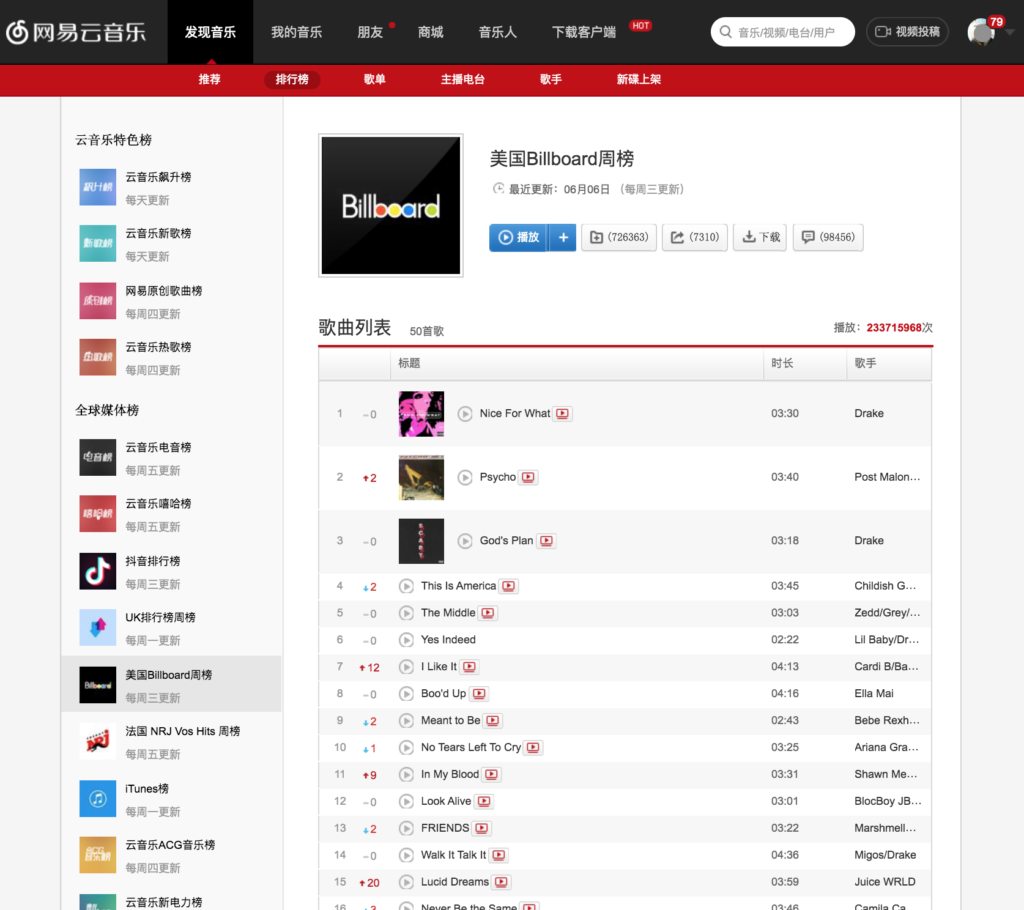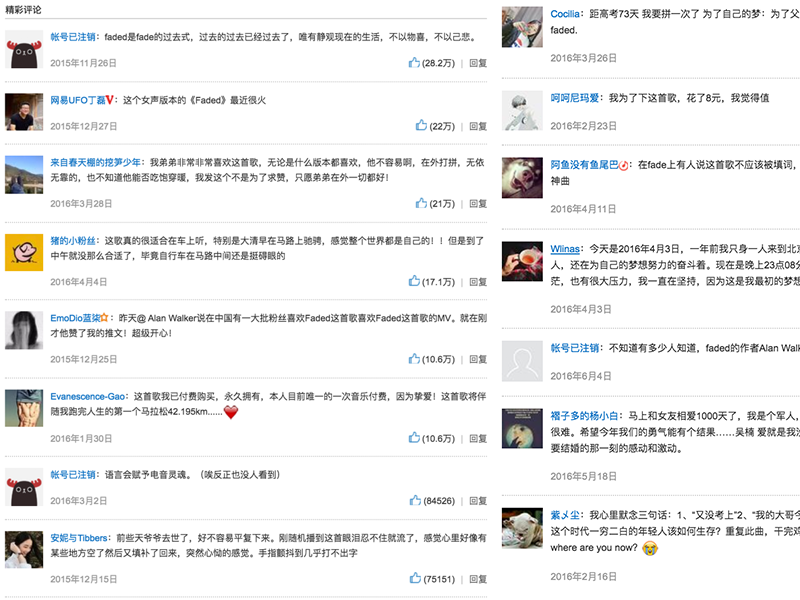NetEase Cloud Music, known in China as 网易云音乐 or “Wangyi” is one of the most powerful new platforms in the market, with an active and supportive user base eager to follow, comment, share, and interact in any way possible. A few years ago, nobody outside China would have even heard the name, so where did it come from, and how can artists use it to their advantage?

User Demographics
While Tencent Music, owners of QQ and other streaming platforms, have long held the crown of highest number of active monthly users, that platform is nowhere near as interesting to foreign artists, for one simple reason. A vast majority of the music streamed on the platform is created by Chinese artists, most notably Taiwanese and Cantonese pop stars. By the same token, nearly most music streamed on NetEase is from foreign artists. Note, these are Chinese fans with a taste for modern music imported from the US and Europe. The company has done a fantastic job adapting to the rush of electronic music into China by providing a platform for the discussion and sharing of EDM and lesser known genres, lead by social influencers and fans eager to show off their knowledge and followed by artists themselves jumping in to promote their music. The latest statistics from the platform boast 400 million active monthly users in just over 5 years of operation.
Format
Every time I’m asked to describe NetEase to someone who’s never used it, I struggle to find the right words. “It’s like Spotify mixed with Facebook” I usually begin, which doesn’t do it justice, but does begin to unravel the multitude of platforms which are contained within. I’ll break it down below by section.
Music
Despite its powerful social features, NetEase is a music streaming platform at its heart. In this regard, expect to find everything you would on Spotify, Deezer, and the like: artist pages with views by track or album, clicking through to song pages which have lyrics and information. Users can have curated playlists which are plentiful and featured all over the app and website. They can also upload podcasts and mixtapes, which also have individual subscribers. You can search by song, artist, album, playlist, and more. Music videos are available as well linked from their respective track pages.

Comments
Now here is the interesting part. Every single page and piece of media I listed has its own comment section. Albums do, as does each track found on that album, completely separate from the videos for those tracks. If a user shares a song on his social feed (more on that later), you guessed it, there is a comment section there as well.
Since there are no play counts displayed on the platform, you can directly gauge the local success of a song by the number of comments it has. At IMS Shanghai last year, one of NetEase’s own executives said during a panel that if a track has less than 1,000 comments, it’s not considered to be popular. Alan Walker’s “Faded”, a smash hit across China, has over 200,000 comments. Even obscure and underground tracks have a handful of comments at least.
The best comments share some insight into the genre, style, artist, creative process, or lyrics, and are voted to the top of the page. The biggest social influencers are often featured with high-rated comments on countless tracks in the genre they are most known for, so very active users will see their name all over the site. It’s not uncommon for artists and brands to comment in their own tracks in an appeal to fans, these are also quickly voted to the top of the section.

Personal Pages & Social Feed
No matter what type of user you are – fan, influencer, artist, label, club, brand, etc., you will have a ‘Personal Page’ or 个人主页 when you sign up for the platform. For artists (and some labels), this personal page can also be linked from the music page, but is wholly separate. You will then have a feed where you can share photo and video, link to music or video found on the platform, and write text up to 140 characters. Like Instagram, links can be written out in comments or status updates, but will never hyperlink, making them relatively useless. As such, it’s best to share content hosted within the platform, which has helped NetEase to thrive and gain even more traction in this social environment. As with any other platform, it’s easy to follow other users and @tag them in status updates and comments.
In terms of style, it’s actually okay (and often encouraged) for users to post in their native language. It conveys the idea that the artist themselves are actually using the platform and taking an interest in their Chinese fans, rather than a marketing agency translating and scheduling posts. Larger accounts will have translations done almost instantly by fans in the comments section, and others will have their fans replying in broken English to try to appeal to or catch the attention of the artist.

Conclusion
NetEase Cloud Music is a highly social, media-heavy platform that is well positioned for use by foreign artists and labels, especially those in the electronic music industry. While it is a great platform for connecting directly to fans, it can be extremely difficult to move those fans offline or out of the platform, so it should by no means be your only strategy for social media or music promotion in China.
If you’d like help registering for NetEase, managing a page, or outlining a strategy for your brand, please reach out via our contact page. or sign up for our newsletter to get them right in your inbox.
Happy Listening!



0 Comments